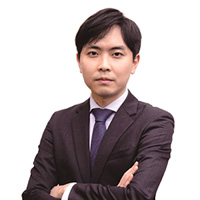
South Korea is suspending training for its reserve forces for a second consecutive year, as the fourth wave of COVID-19 threatens to spiral out of control.
The US provided Johnson & Johnson’s coronavirus vaccine for South Korean troops and military workers, but the supply fell short of covering key demographic groups -- those aged between 20 and 30, who account for the majority of the reserve forces.
“Those aged 30 and below will receive their shots in August at the earliest, which means they will develop resistance to the virus in mid-October. Training this year is out the window,” the Ministry of National Defense said Wednesday.
But the ministry said it will instead offer online courses for reservists seeking to brush up on their knowledge of combat skills, adding that commanders at key front-line units will take part in the training without the reservists.
“Hopefully it will be back to business as usual next year, with everyone vaccinated and ready to go again,” a senior military official said.
South Korea maintains a 3.1 million-strong reserve forces, the world’s largest, according to the London-based International Institute for Strategic Studies.
A vital part of the country’s defenses along with its 555,000-strong standing army, they were established in April 1968, three months after a 31-member team of North Korean commandos was sent here to assassinate South Korea’s then-President Park Chung-hee.
The reserve forces demonstrated their capabilities by defeating almost all of the North Korean commandos deployed again later that year -- from late October to early November 1968 -- to topple the South Korean government.
At the time, North Korea bypassed the increased border security prompted by the Blue House raid by sending its team to coastal locations in Gangwon Province. The team established guerilla camps and tried reaching out to villagers in the hope that they would sympathize with their cause.
South Korea and the US successfully thwarted the advances of the 120 North Koreans, with the South’s reserve forces helping to kill 107 people and capture seven alive.
The US provided Johnson & Johnson’s coronavirus vaccine for South Korean troops and military workers, but the supply fell short of covering key demographic groups -- those aged between 20 and 30, who account for the majority of the reserve forces.
“Those aged 30 and below will receive their shots in August at the earliest, which means they will develop resistance to the virus in mid-October. Training this year is out the window,” the Ministry of National Defense said Wednesday.
But the ministry said it will instead offer online courses for reservists seeking to brush up on their knowledge of combat skills, adding that commanders at key front-line units will take part in the training without the reservists.
“Hopefully it will be back to business as usual next year, with everyone vaccinated and ready to go again,” a senior military official said.
South Korea maintains a 3.1 million-strong reserve forces, the world’s largest, according to the London-based International Institute for Strategic Studies.
A vital part of the country’s defenses along with its 555,000-strong standing army, they were established in April 1968, three months after a 31-member team of North Korean commandos was sent here to assassinate South Korea’s then-President Park Chung-hee.
The reserve forces demonstrated their capabilities by defeating almost all of the North Korean commandos deployed again later that year -- from late October to early November 1968 -- to topple the South Korean government.
At the time, North Korea bypassed the increased border security prompted by the Blue House raid by sending its team to coastal locations in Gangwon Province. The team established guerilla camps and tried reaching out to villagers in the hope that they would sympathize with their cause.
South Korea and the US successfully thwarted the advances of the 120 North Koreans, with the South’s reserve forces helping to kill 107 people and capture seven alive.





![[Herald Interview] 'Trump will use tariffs as first line of defense for American manufacturing'](http://res.heraldm.com/phpwas/restmb_idxmake.php?idx=644&simg=/content/image/2024/11/26/20241126050017_0.jpg&u=20241126161719)

![[Herald Review] 'Gangnam B-Side' combines social realism with masterful suspense, performance](http://res.heraldm.com/phpwas/restmb_idxmake.php?idx=644&simg=/content/image/2024/11/25/20241125050072_0.jpg&u=)
![[Health and care] Getting cancer young: Why cancer isn’t just an older person’s battle](http://res.heraldm.com/phpwas/restmb_idxmake.php?idx=644&simg=/content/image/2024/11/26/20241126050043_0.jpg&u=20241126145342)









